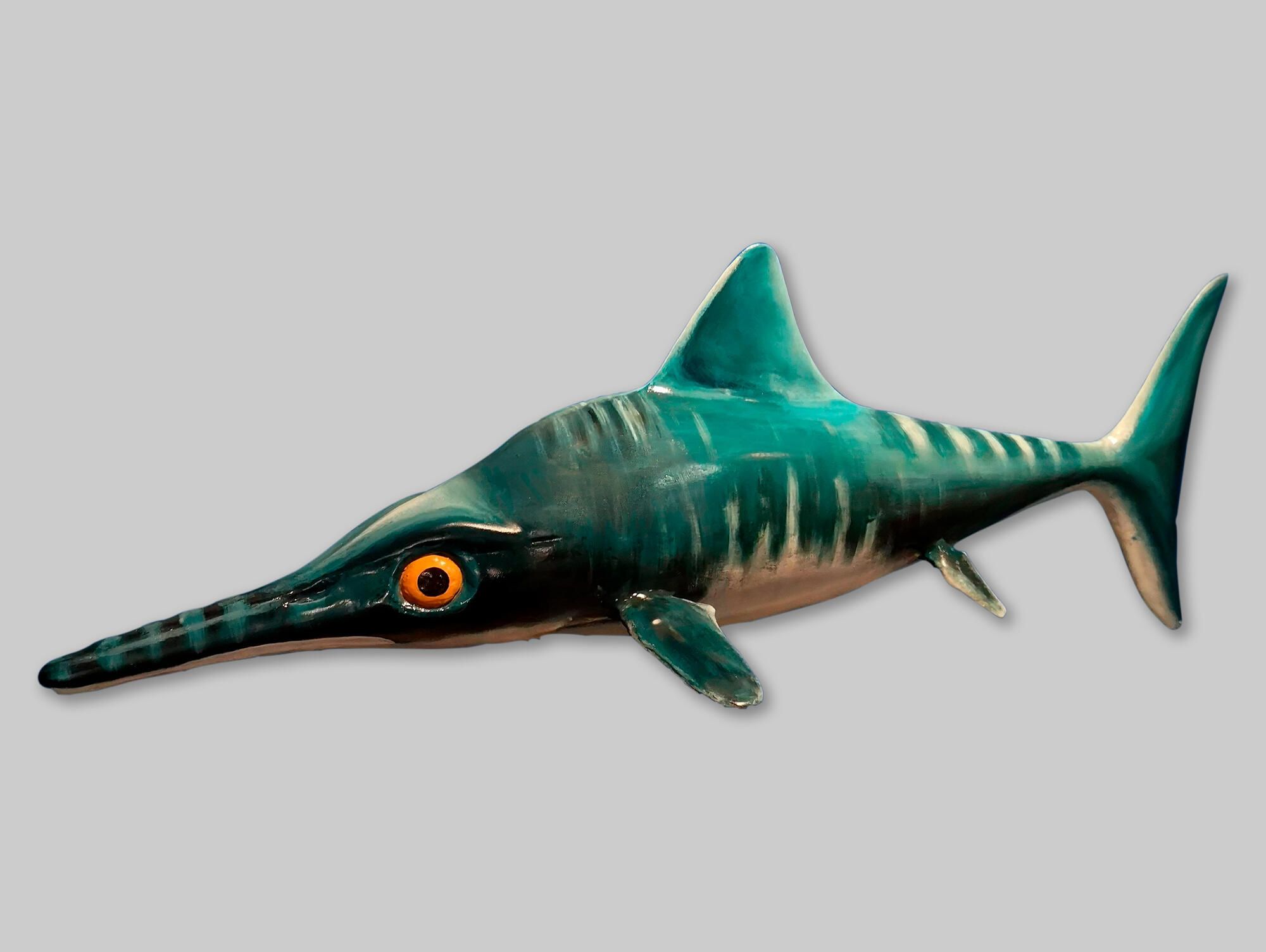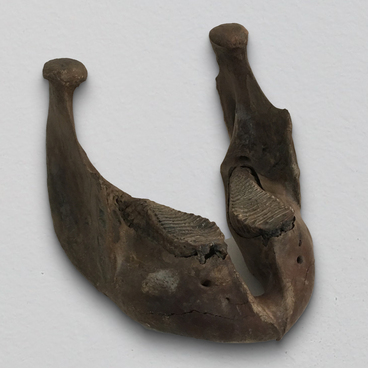Ichthyosaurs are extinct reptiles. Translated from Greek, their name means ‘fish-lizard’. Their ancestors once left the sea and went on land, however millions of years later, ichthyosaurs made their way back - they returned to the sea so as not to leave it again. They appeared in the waters of the world’s oceans about 250 million years ago and disappeared 94 million years ago.
Fish-like reptiles lived only in salt water, feeding on ammonites, belemnites, squid, fish, crustaceans and smaller reptiles. The feeding habits of different ichthyosaur species have been observed in the structure of the jaws. Those that fed on ammonites had massive jaws with heavy teeth. Reptiles, which preferred fish, had a thinner and more elongated jaw structure with many small conical teeth.
Ichthyosaurs had the largest eyes among all vertebrates - they reached 20 cm in diameter. The huge eyeball was supported by special plates that many animals had, however with the ichthyosaurs they ossified. Some scientists believe that such devices were necessary for hunting at depths with high pressure and little light.
The lizard accelerated in the water with the help of fast movements of a powerful tail, and for maneuverability it used limbs that turned into flippers. Anatomically, the flipper was interconnected fingers: ichthyosaurs could have 10 of them in each limb, while the finger had up to 30 phalanges.
Rapid metabolism and a layer of subcutaneous fat allowed the ichthyosaur to maintain a constant body temperature of about 35–39 ° C, which was important when diving to a depth of 1.5 km (where some ichthyosaur species descended). These reptiles were viviparous: in each litter about a dozen completely independent cubs appeared. Depending on the species, adult fish-lizard could grow up to 23 m in length, but most of them did not exceed 2–4 m.
Global warming in the middle of the Cretaceous led to the depletion of oxygen in ocean waters. As a result, a chain of events led to an “anoxide catastrophe”: ichthyosaurs could not adapt to new environmental conditions and became extinct.
Fish-like reptiles lived only in salt water, feeding on ammonites, belemnites, squid, fish, crustaceans and smaller reptiles. The feeding habits of different ichthyosaur species have been observed in the structure of the jaws. Those that fed on ammonites had massive jaws with heavy teeth. Reptiles, which preferred fish, had a thinner and more elongated jaw structure with many small conical teeth.
Ichthyosaurs had the largest eyes among all vertebrates - they reached 20 cm in diameter. The huge eyeball was supported by special plates that many animals had, however with the ichthyosaurs they ossified. Some scientists believe that such devices were necessary for hunting at depths with high pressure and little light.
The lizard accelerated in the water with the help of fast movements of a powerful tail, and for maneuverability it used limbs that turned into flippers. Anatomically, the flipper was interconnected fingers: ichthyosaurs could have 10 of them in each limb, while the finger had up to 30 phalanges.
Rapid metabolism and a layer of subcutaneous fat allowed the ichthyosaur to maintain a constant body temperature of about 35–39 ° C, which was important when diving to a depth of 1.5 km (where some ichthyosaur species descended). These reptiles were viviparous: in each litter about a dozen completely independent cubs appeared. Depending on the species, adult fish-lizard could grow up to 23 m in length, but most of them did not exceed 2–4 m.
Global warming in the middle of the Cretaceous led to the depletion of oxygen in ocean waters. As a result, a chain of events led to an “anoxide catastrophe”: ichthyosaurs could not adapt to new environmental conditions and became extinct.



